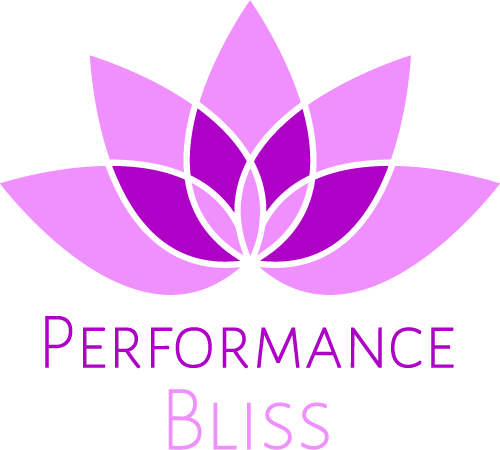Year end reviews are a critical process for both managers and employees. It’s a time to reflect on performance, set goals for the future, and recognize accomplishments. Done right, a year-end review can motivate employees, foster growth, and align individual goals with company objectives. However, if not handled well, it can leave employees feeling discouraged or unclear about their future.
In this article, we’ll explore a step-by-step guide to conducting a productive year-end review, focusing on performance, goals, and growth opportunities. With the right approach, you can make this an insightful and valuable experience for your team.
For managers looking to streamline their performance review process, PerformanceBliss offers software that simplifies evaluations and tracks employee progress.
Step 1: Prepare for the Year End Reviews
Preparation is key to a successful year-end review. Before sitting down with your employees, review their performance over the year. Collect data, feedback, and any other relevant information that can provide a comprehensive view of their achievements and areas of improvement.
Some ways to prepare include:
- Review performance metrics: Track progress on projects, sales numbers, or any KPIs relevant to their role.
- Gather 360-degree feedback: Collect input from peers, direct reports, and supervisors for a balanced evaluation.
- Analyze past reviews and goals: Look back at previous performance reviews to evaluate progress on past objectives.
Being well-prepared helps make the review process more meaningful and ensures that the feedback you provide is based on facts, not assumptions.
Step 2: Create a Comfortable Setting for Year End Reviews
The atmosphere of the year-end review meeting can impact how well the feedback is received. Aim to create a positive, open environment where employees feel comfortable discussing their experiences.
To foster this environment:
- Set aside enough time: Ensure the meeting is long enough for a thorough discussion, without interruptions.
- Choose a private location: Conduct the review in a quiet, private space where the employee feels secure.
- Start with positive feedback: Begin the conversation by acknowledging achievements and contributions made throughout the year.
When employees feel valued and heard, they are more likely to engage in the discussion and take constructive feedback seriously.
Step 3: Focus on Performance During Year End Reviews
The primary goal of the year-end review is to assess employee performance over the past year. Use a balance of qualitative and quantitative data to paint an accurate picture of the employee’s contributions.
When discussing performance, focus on:
- Accomplishments: Highlight the employee’s achievements and how they contributed to the team or company goals.
- Areas for Improvement: Identify any areas where the employee can improve. Use specific examples to illustrate these points.
- Behavior and Skills: Evaluate both technical skills and interpersonal behavior, such as teamwork, communication, and leadership.
PerformanceBliss helps managers track performance metrics, ensuring you have the data you need for a balanced and fair evaluation.
Step 4: Use the Year End Review to Set SMART Goals
Goal-setting is one of the most important parts of the year-end review. Clear, actionable goals help employees understand what’s expected of them in the future and give them a path to success.
Set SMART goals during the review:
Specific: Clearly define what needs to be achieved.
Measurable: Determine how success will be measured.
Achievable: Ensure the goal is realistic given the employee’s current skills and resources.
Relevant: Align the goal with the company’s broader objectives.
Time-bound: Set a deadline for the goal to be achieved.
For example, instead of saying, “Improve your leadership skills,” you could say, “Lead two team projects in the next quarter and mentor a junior team member.”
PerformanceBliss makes goal-setting easy by tracking progress on employee goals and providing updates throughout the year, ensuring continuous growth.
Step 5: Encourage Open Dialogue in the Year End Review
A productive year-end review is not a one-sided conversation. Encourage employees to share their thoughts, ask questions, and provide feedback. This open dialogue builds trust and helps you understand their perspectives, motivations, and challenges.
Consider asking questions like:
- How do you feel about your progress this year?
- What challenges did you face, and how can we help you overcome them?
- What skills or areas do you want to develop next year?
By encouraging employees to voice their opinions, you can tailor your feedback to better support their personal and professional growth.
Step 6: Discuss Career Development and Growth Opportunities
The year-end review is the perfect time to discuss the employee’s long-term career goals. Employees who see a clear path for growth within the company are more engaged and motivated.
During the review, explore areas for growth, such as:
- Additional responsibilities: Can the employee take on new or more complex tasks?
- Leadership opportunities: Is the employee ready for a promotion or leadership role?
- Training or education: Would the employee benefit from further training or professional development?
Offering opportunities for advancement helps retain top talent and keeps employees motivated to improve.
If you’re looking for ways to track career development within your company, PerformanceBliss offers tools to set long-term goals and monitor progress, ensuring that your team members continue to grow.
Step 7: Address Any Challenges and Provide Support
No review is complete without addressing challenges. Employees may have faced roadblocks throughout the year that hindered their performance. The year-end review is an opportunity to identify these challenges and find ways to support employees moving forward.
Ask employees if they faced any issues that impacted their work, and provide solutions for improvement. This could include offering additional resources, changing workflows, or adjusting responsibilities.
By addressing challenges, you show employees that you are invested in their success.
Step 8: End the Year End Review on a Positive Note
How you conclude the year-end review can leave a lasting impression. Ensure that employees walk away feeling motivated and appreciated, even if the review included constructive criticism.
To end the review on a positive note:
- Recap strengths and achievements: Reinforce the employee’s contributions and progress.
- Express appreciation: Thank the employee for their hard work throughout the year.
- Provide a clear path forward: Summarize the next steps, including goals and development opportunities.
A positive conclusion boosts morale and encourages employees to take action on the feedback you’ve provided.
Step 9: Follow Up After the Year End Review
Successful year end reviews don’t end once the meeting is over. Follow up with employees throughout the year to track their progress on the goals you set. Regular check-ins help ensure employees stay on track and have the support they need to succeed.
- Schedule quarterly reviews to monitor progress.
- Offer ongoing feedback to encourage improvement.
- Adjust goals as necessary to reflect changes in priorities or challenges.
This ongoing support ensures that feedback is not just a once-a-year event but part of a continuous improvement process.
PerformanceBliss helps managers maintain ongoing performance management by providing tools for regular check-ins and tracking employee progress in real-time.
Conclusion: Make Year End Reviews a Tool for Growth
Well-structured year end reviews are more than just a formality—it’s a powerful tool for employee development and team success. By focusing on performance, setting clear goals, and offering growth opportunities, managers can turn the review process into a valuable experience that benefits both the employee and the organization.
If you want to make your year-end reviews more effective, PerformanceBliss offers software designed to simplify the process and help you create data-driven, actionable reviews. From setting goals to tracking progress, PerformanceBliss ensures your year-end reviews drive growth and improve performance.
Start using PerformanceBliss to enhance your review process today and see the positive impact on your team’s performance!
👇 Related Reads from Performance Bliss
If you found this helpful, you might also like:


